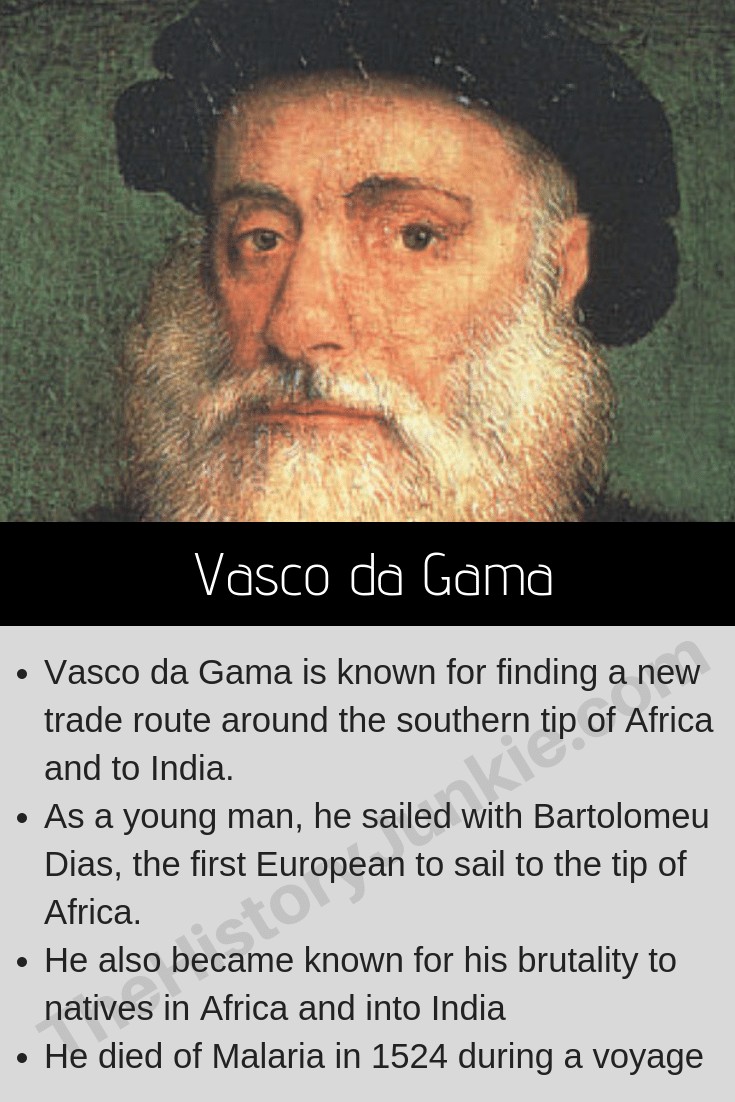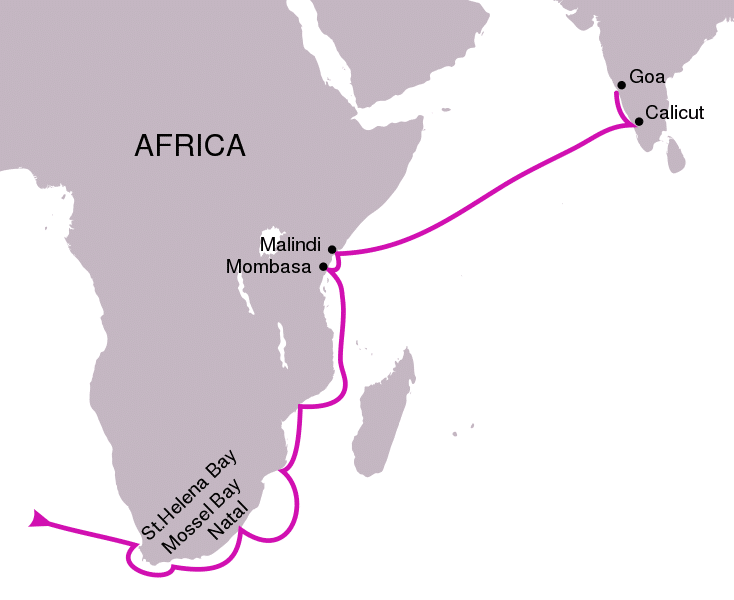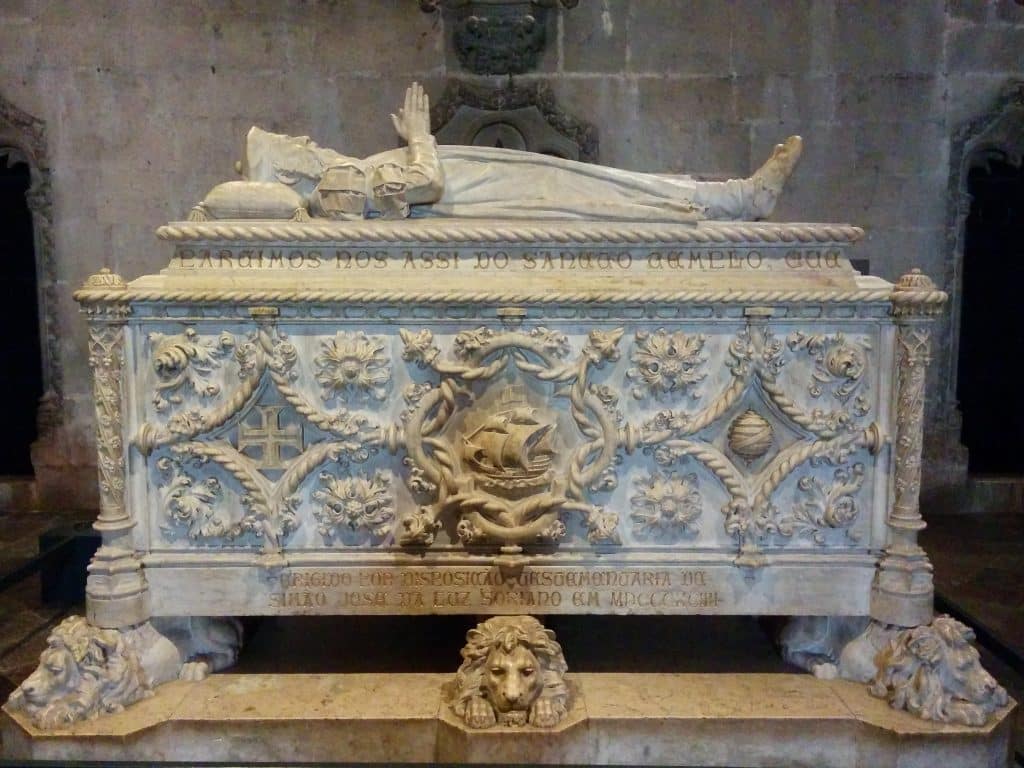Historians disagree on the date of Vasco da Gama's birth. It was either 1460 or 1469 in Sines on the southwest coast of Portugal. His father was Estevao da Gama, who was also famous in his time.

In 1460, he was appointed as a knight of the household of Infante Ferdinand, Duke of Viseu. He would hold this position until around 1478.
His father married Isabel Sodre. Sodre had connections with the household of Infante Ferdinand, which led to a profitable marriage.
Vasco da Gama was the third of five brothers. He also had a sister. This is all that is known of his childhood and adolescent years.
In 1480, he joined the Order of Santiago, whose master was Prince John. John would eventually ascend to the Portuguese throne and become King John II.
This connection would serve him well. Twelve years later, King John would send Vasco da Gama on a mission to seize French ships. Vasco did so, and he did it with much speed and effectiveness.
The Explorer
He would get his first taste of exploration with Bartolomeu Dias when he has sailed around what is now called the Cape of Good Hope.
Dias would not reach India. His mission was to prove that it was possible to sail around the Cape of Good Hope.
On July 8th, 1497, Vasco da Gama set out on his first voyage with 170 men from Lisbon. His mission would be to sail around the Cape and make his way to India.
On December 16th, 1497, Vasco da Gama reached the point where Bartolomeu Dias turned back. Vasco da Gama continued with the hope that he would find a new route to India.
During his voyage, he realized that the Eastern African coast was primarily Muslim. He believed that it would hinder him if they found out that he was Christian.

In order to gain an audience with the Sultan of Mozambique, he acted as if he was a Muslim. Unfortunately, he was unable to give a suitable gift to the Sultan and was met with hostility and left.
While leaving, he turned his ship and fired into the city.
Around the city of Mombasa, da Gama began looting Arab merchant ships that were unarmed. This would not go over well with the Mombasa population. Although da Gama was the first European to sail into the port of Mombasa, he was met with hostility.
In February of 1498, about 8 months after he first left Lisbon, he sailed into the port of Malindi. Malindi was friendly and happened to be at war with Mombasa. This is where da Gama first learned of Indian trade vessels. From here, he would set sail to Calicut, India.
Vasco da Gama arrived near Calicut on May 20th, 1498. The Kind of Calicut was hospitable but unimpressed with da Gama's gifts. Muslim traders who perceived the Europeans as a rival accused him of being nothing more than a pirate.
These things would strain the relationship between the King and Vasco da Gama. Even so, he would return to Portugal with riches worth 60 times more than the expedition.
Vasco da Gama returned to Portugal in September of 1499. Upon his return, he would receive the title "The Admiral of the Indian Seas."

Other Voyages and Cruelty
Vasco da Gama and the 4th Portuguese Armada would set sail for Calicut a second time on February 12th, 1502. This voyage would be different, and he would inflict many acts of cruelty along the way.
Upon his second arrival in India, Vasco da Gama began to seize any Arab vessel he came across.
This led to the notorious Pilgrim Ship incident in which he captured a vessel carrying Muslims on a pilgrimage from Calicut to Mecca. Gasper Correia, a Portuguese historian, described his acts as one that is unequaled in cold-blooded cruelty.
The Portuguese explorer looted the ship that was carrying 400 pilgrims. Among them were 50 women. He then proceeded to lock in every passenger onboard and raze the ship. Women were bringing up their wealth and babies and begging for mercy.
It is said that they brought up enough gold to ransom all the Christians in the Kingdom of Fez. Vasco da Gama would not spare any and burned alive every man, woman, and child.
During his visit to Calicut, he demanded that the King expel every Muslim from India. The King would refuse.
In retaliation, Vasco da Gama would bombard the city, destroying many houses, and would also seize a rice vessel, capture the crew, and cut off their hands, nose, and ears.
The King sent a priest to speak to Vasco da Gama. Da Gama would call him a spy and cut off his lips and ears, and then proceed to sew a pair of dog ears onto his head.
After his privateer actions, he would return to Portugal with numerous riches.
Later Life and Death
In 1519, da Gama would become the first Portuguese Count who was not born of royal blood.
In 1524, he embarked on his final journey. He was asked to replace the Viceroy Eduardo de Menezes. Along the journey, he contracted Malaria and would die in the city of Cochin on Christmas Eve.
His body would be buried in the city of Kochi. His remains were sent back to Portugal 15 years later in 1539.

